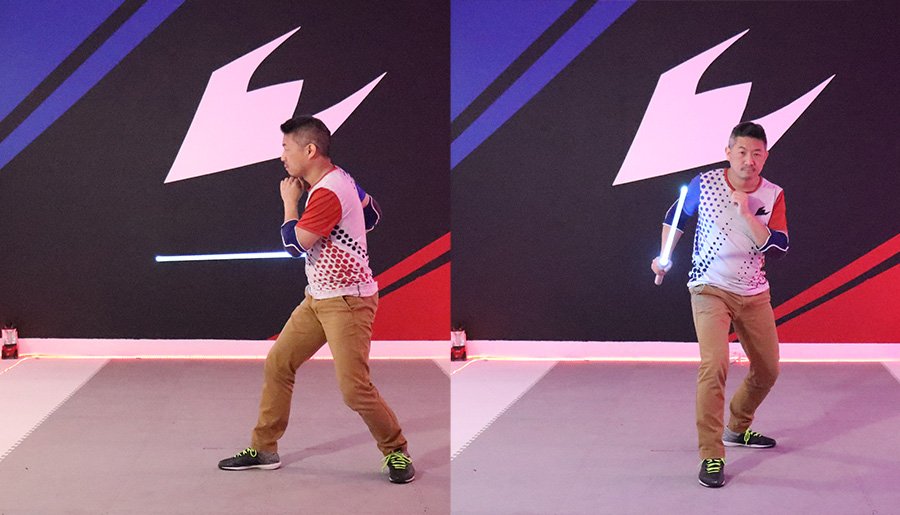A guard is a starting position for both offensive and defensive actions, and determines which attacks and blocks are the most practical at any particular moment.
SEARCH TAGS: High Middle Low Neutral Inside Outside Supinate (thumb up) Pronate (thumb down)
ESSENTIAL GUARDS
The essential guards are the first thing a beginner learns, and remain important even at the top level. These can also be thought of as the “speed guards” as they are the prime positions for the fastest offensive and defensive actions.
TUCKED GUARDS
Guards are not only starting points, they can also be endpoints for attacks, such as these tucked guards. These are generally tip-forward guards but with the hand withdrawn near the body.
Most of the tucked guards have a rear guard twin. See below.
REAR GUARDS
These are advanced guards that leave you vulnerable, and should only be used by fencers with good power control.
The weapon is held with a bent arm, thumb up. While this looks like a tucked guard, it is actually a rear guard because the blade can easily point to the side or rear. Its tucked twin is Holster. The wing guards are close cousins.
TERMS
Inside — Refers to the side of the body more distant from the opponent while standing in Standard Stance. For a right-hander, this is the left side.
Outside — Refers to the side of the body closer to the opponent while in Standard Stance. For a right-hander, this is the right side.
Supinate — A wrist orientation in which the thumb is visible to the fencer while holding a weapon.
Pronate — A wrist orientation in which the thumb is not visible to the fencer while holding a weapon.
Neutral — Refers to how you orient your wrist, in this case neither rolled to the left or right, as you might while giving a handshake.
Twin — Any non-neutral guard has a supinate and pronate version, which typically determines whether the blade is tipped to the front or the rear. These versions are referred to as twins.

















